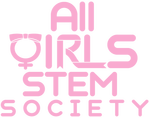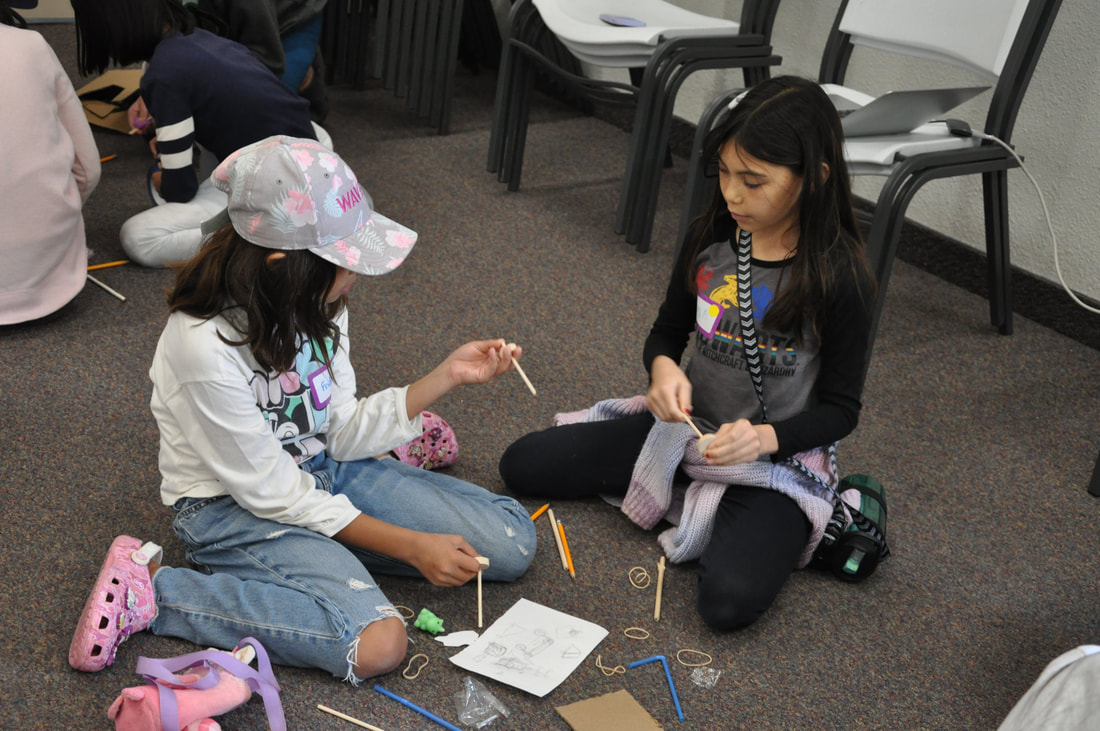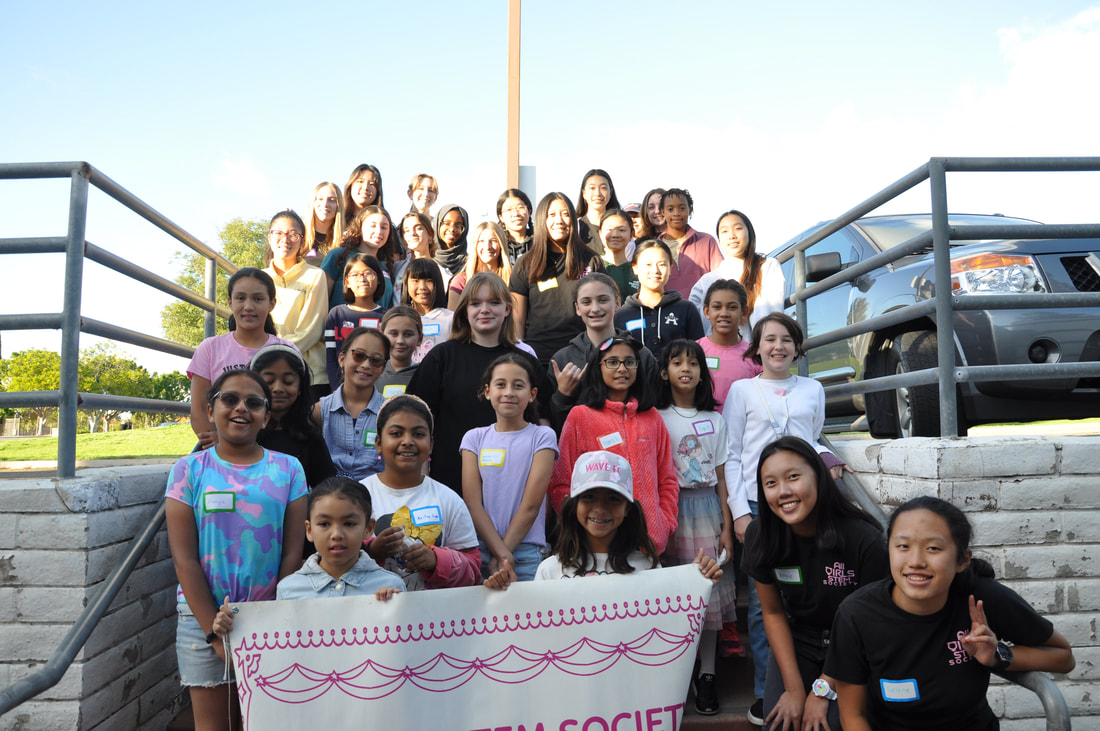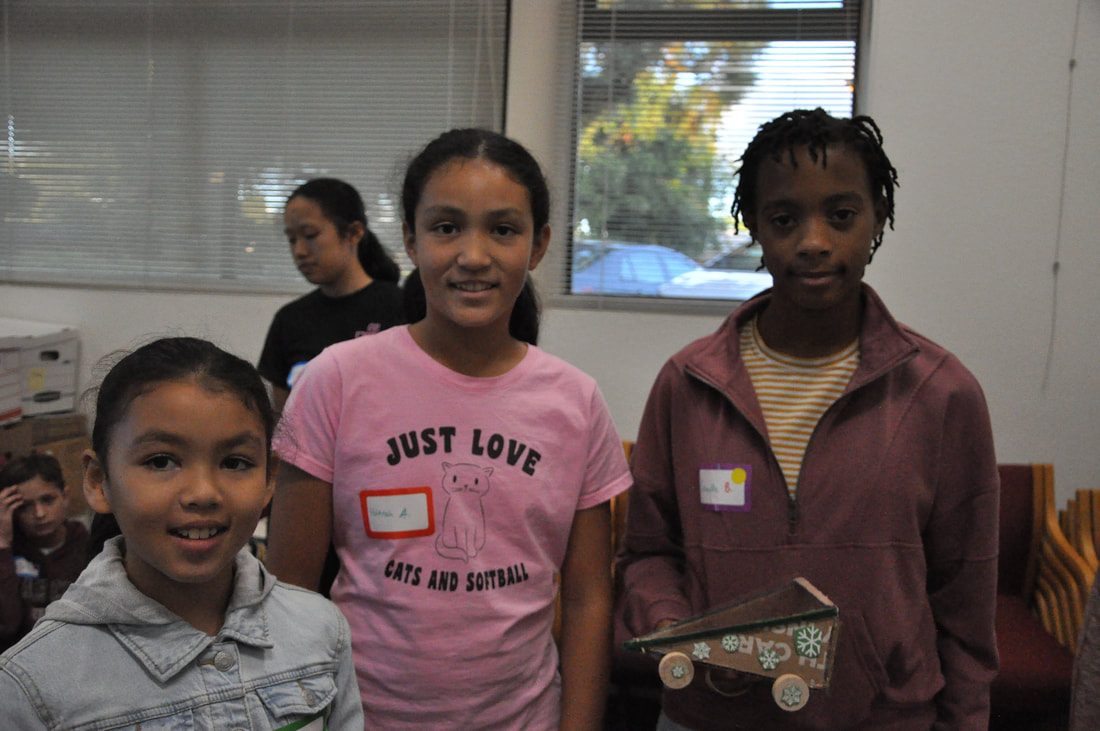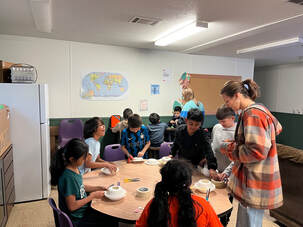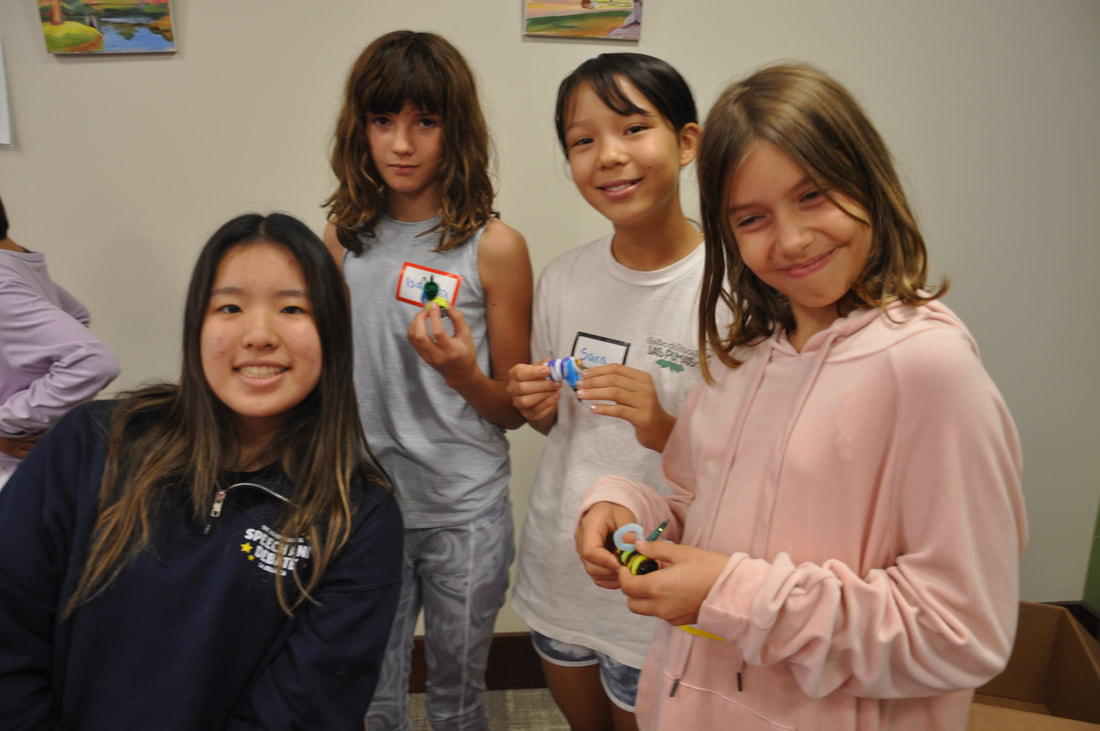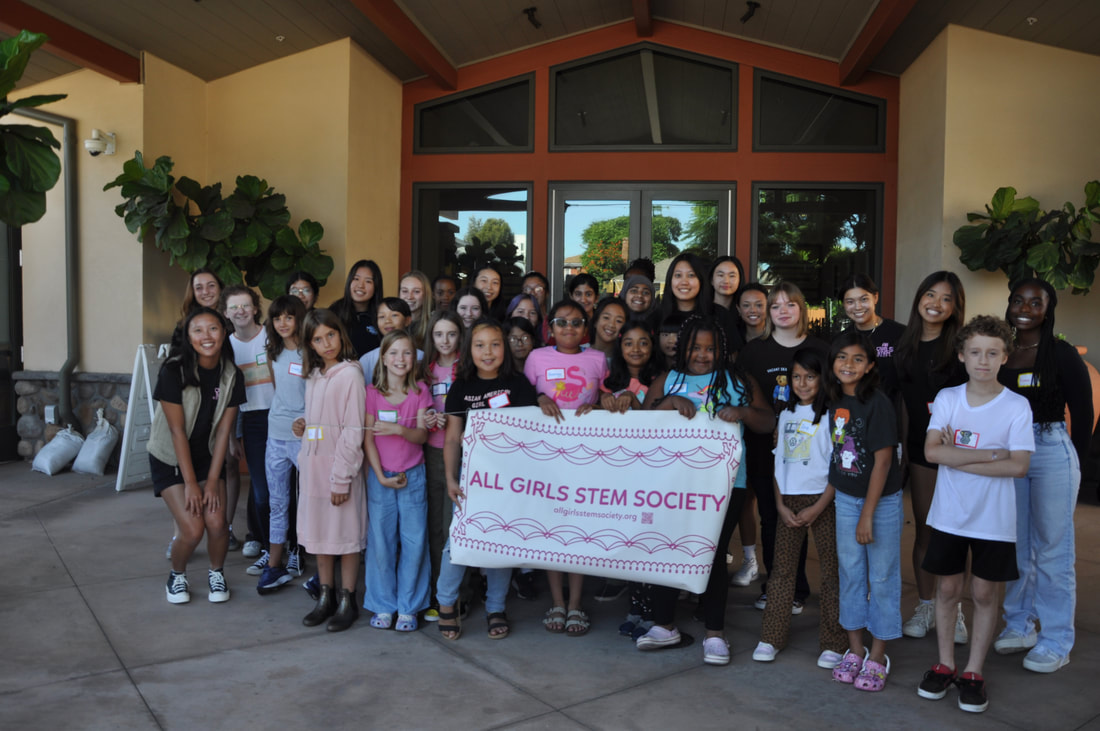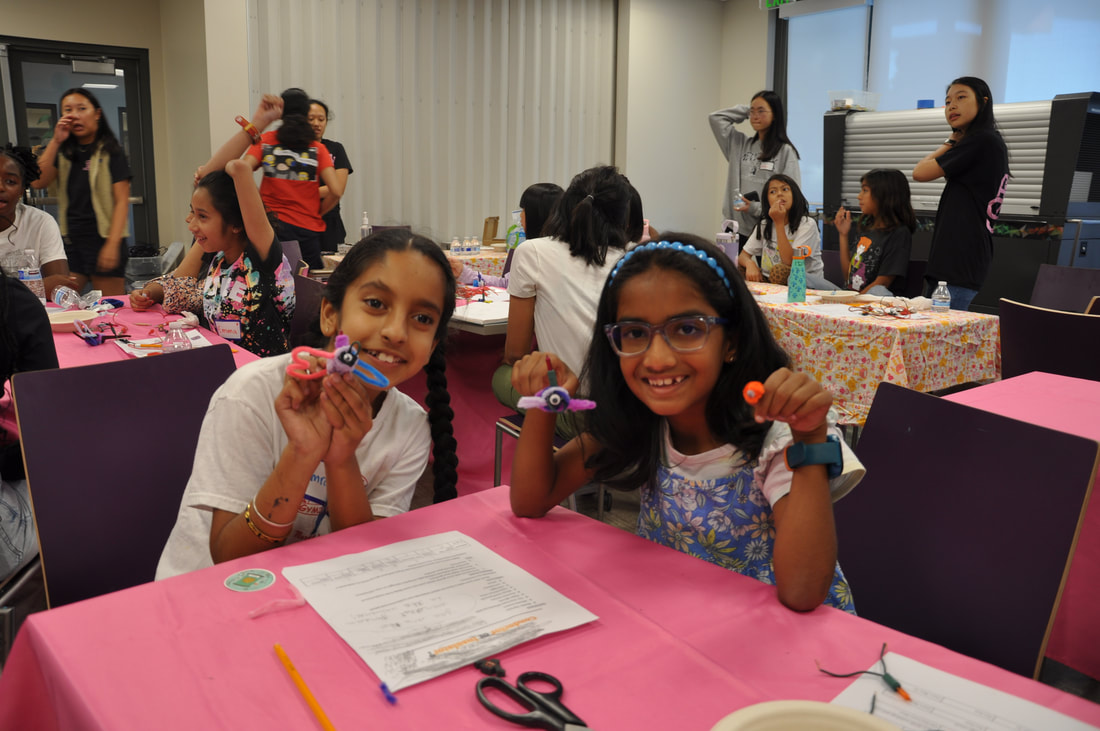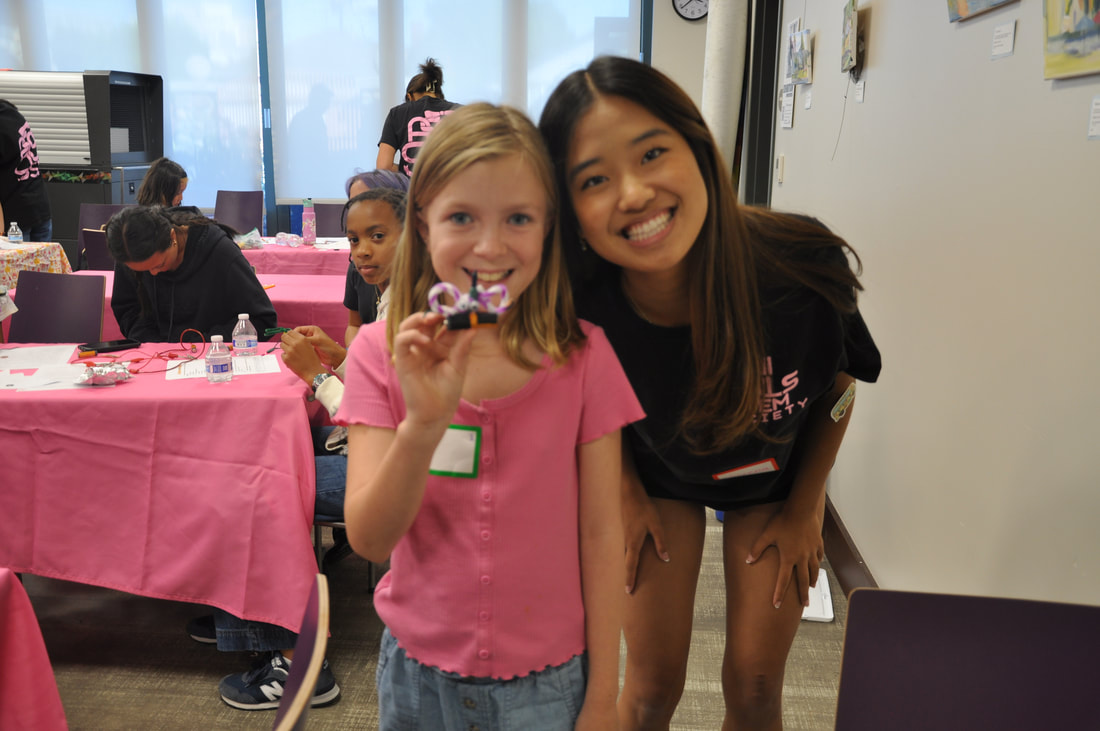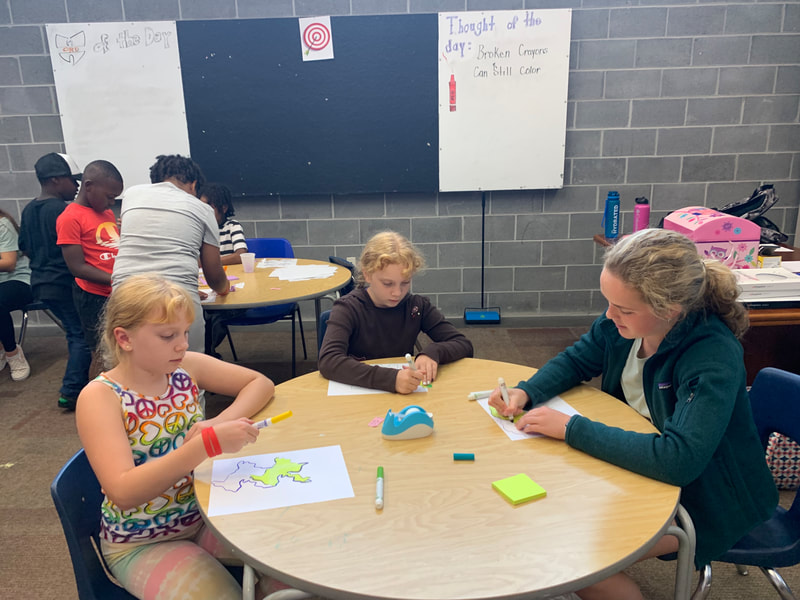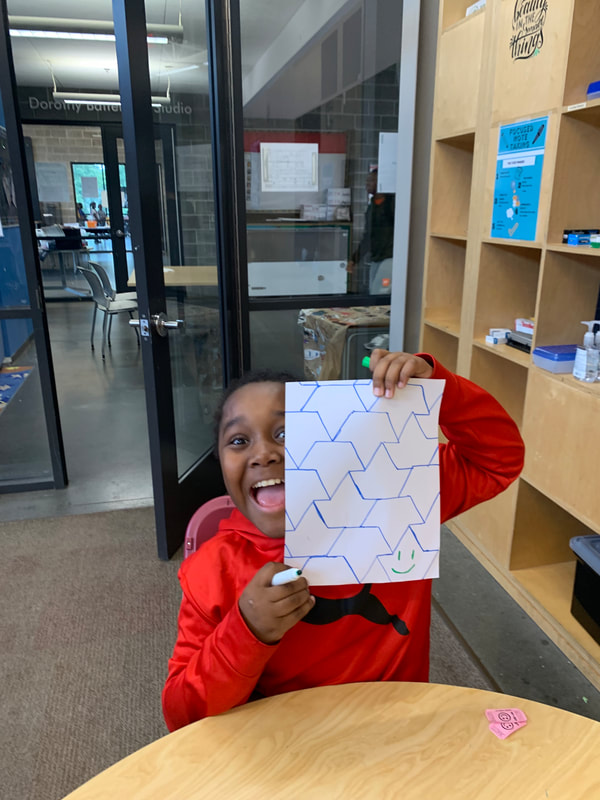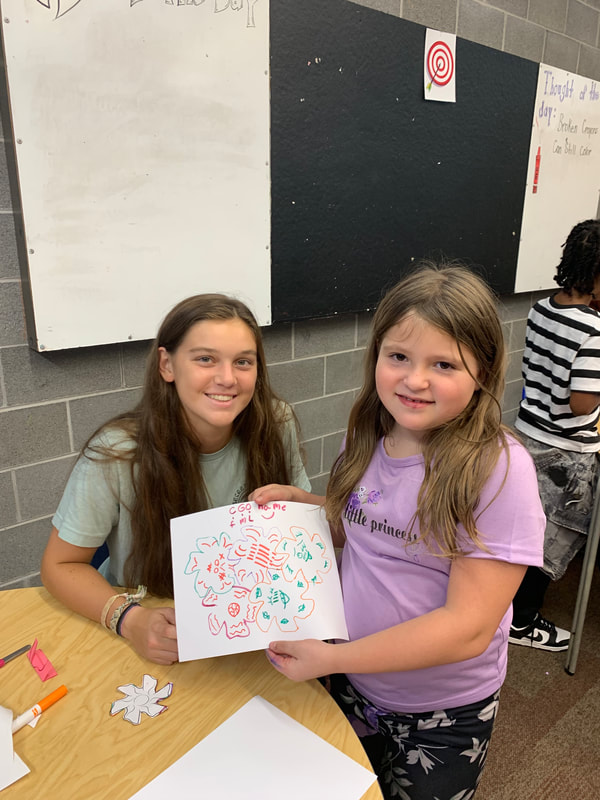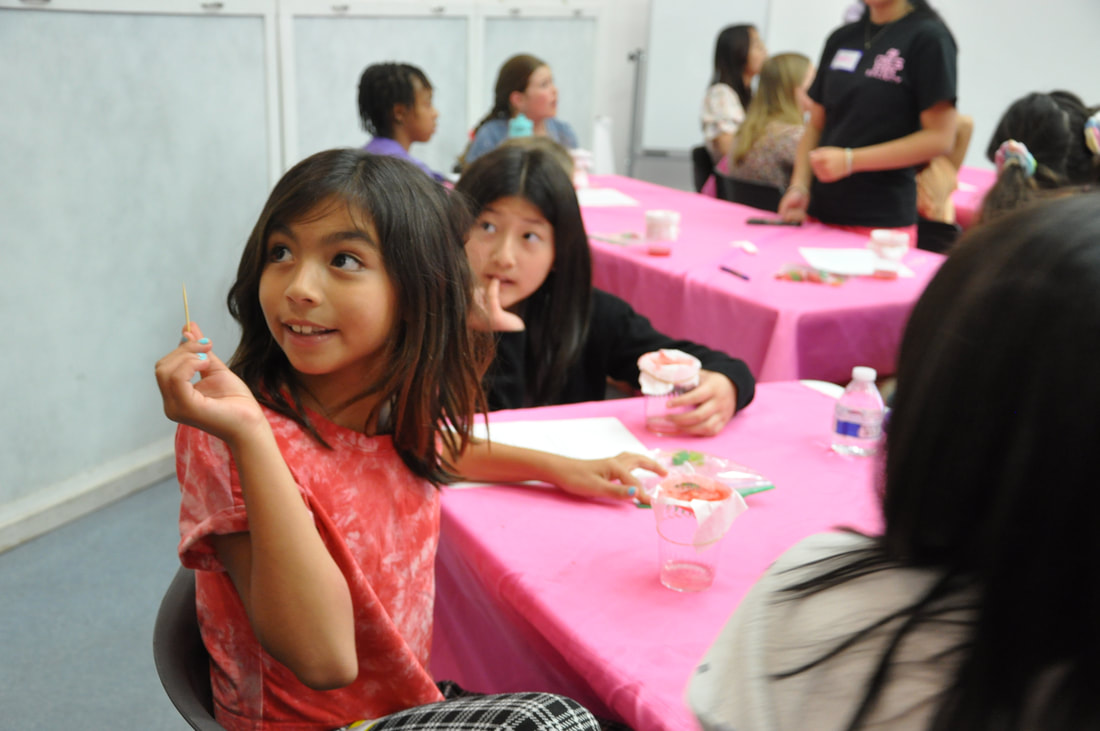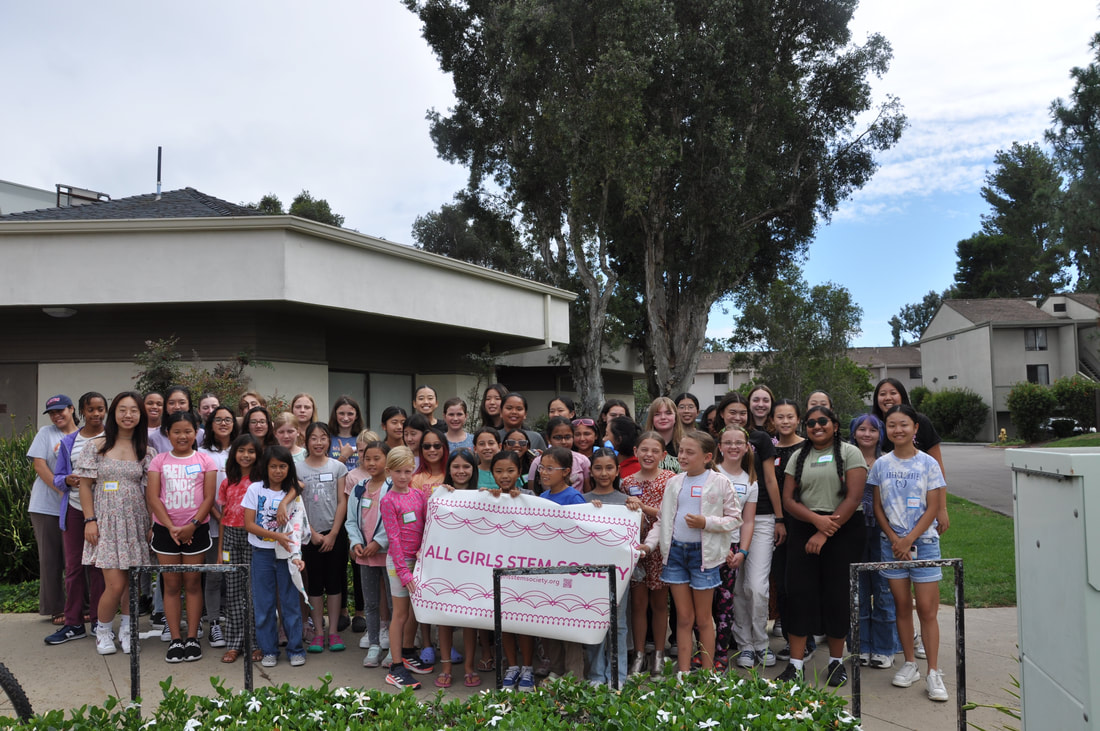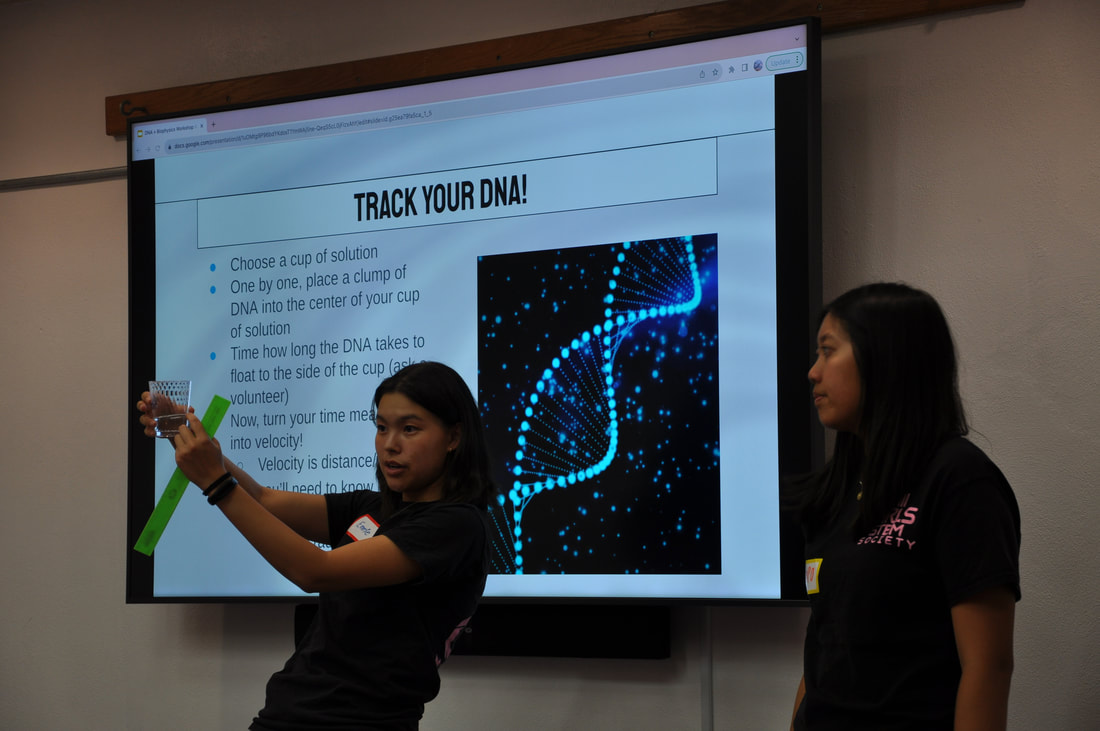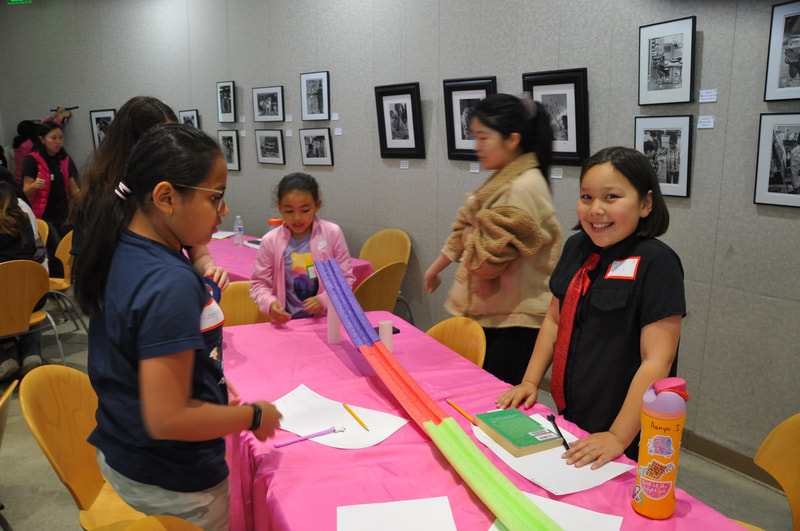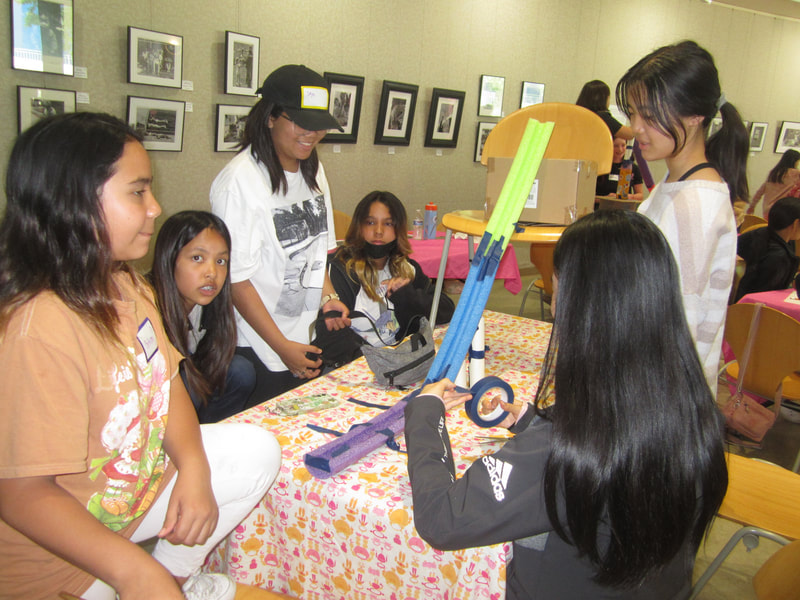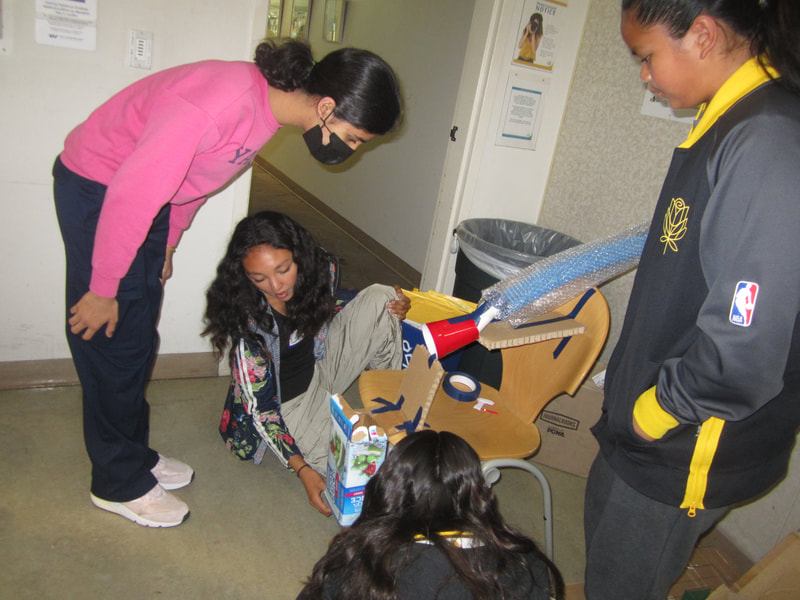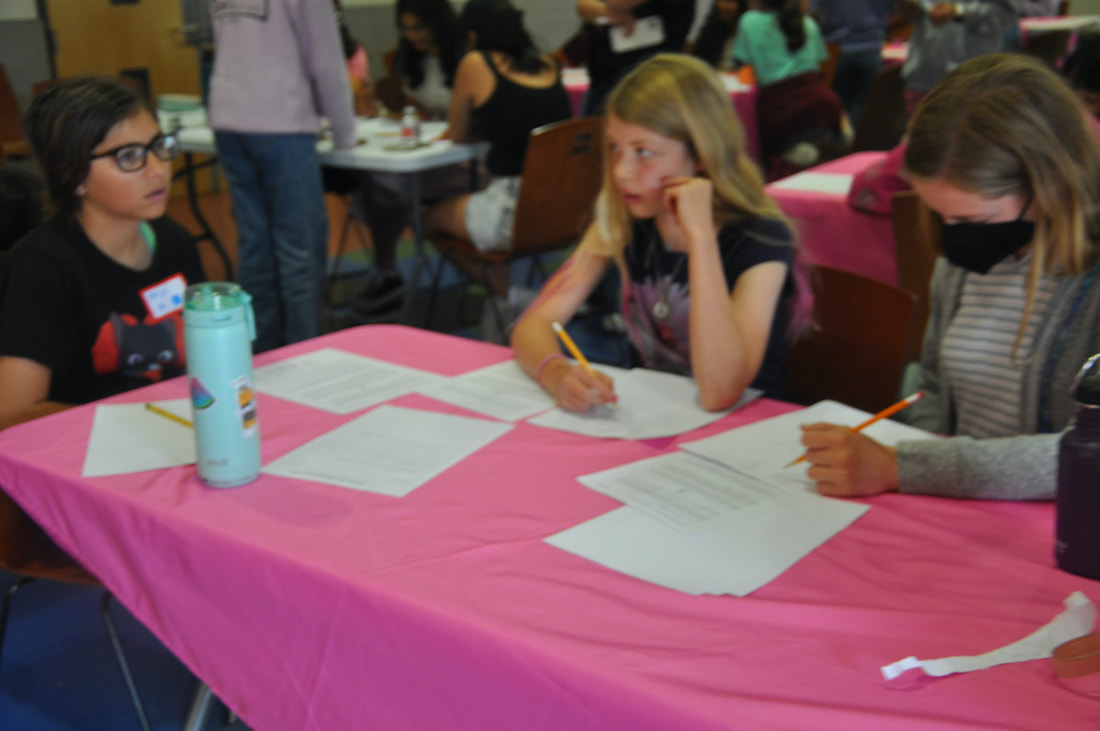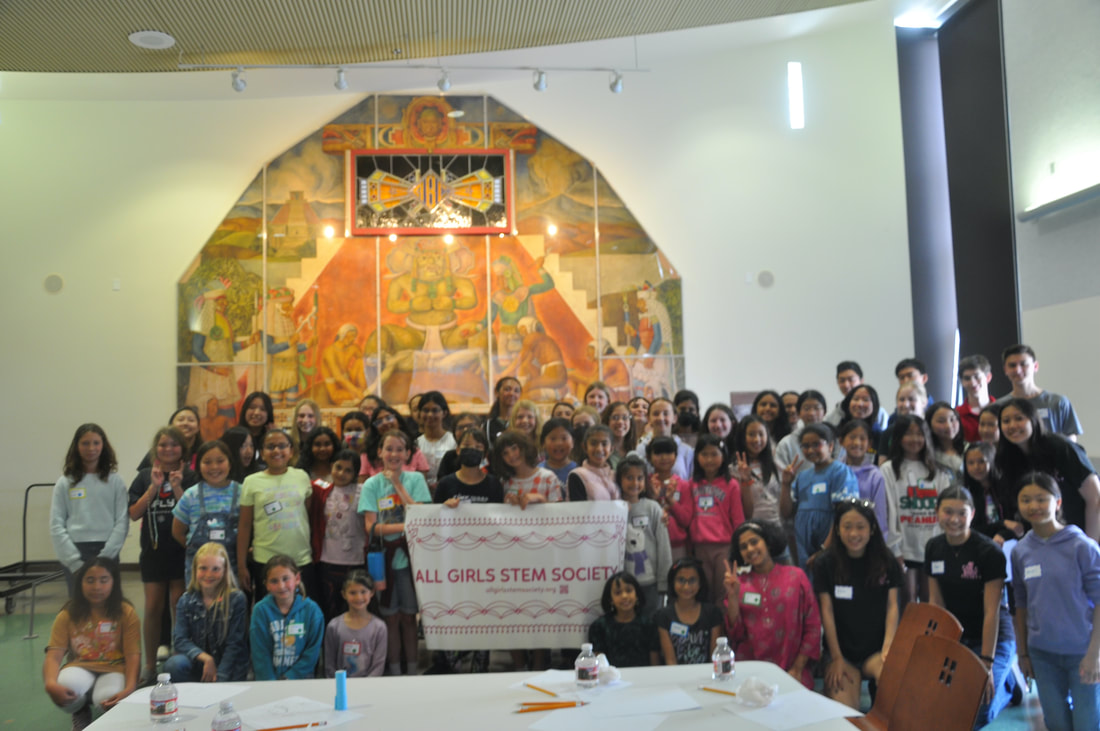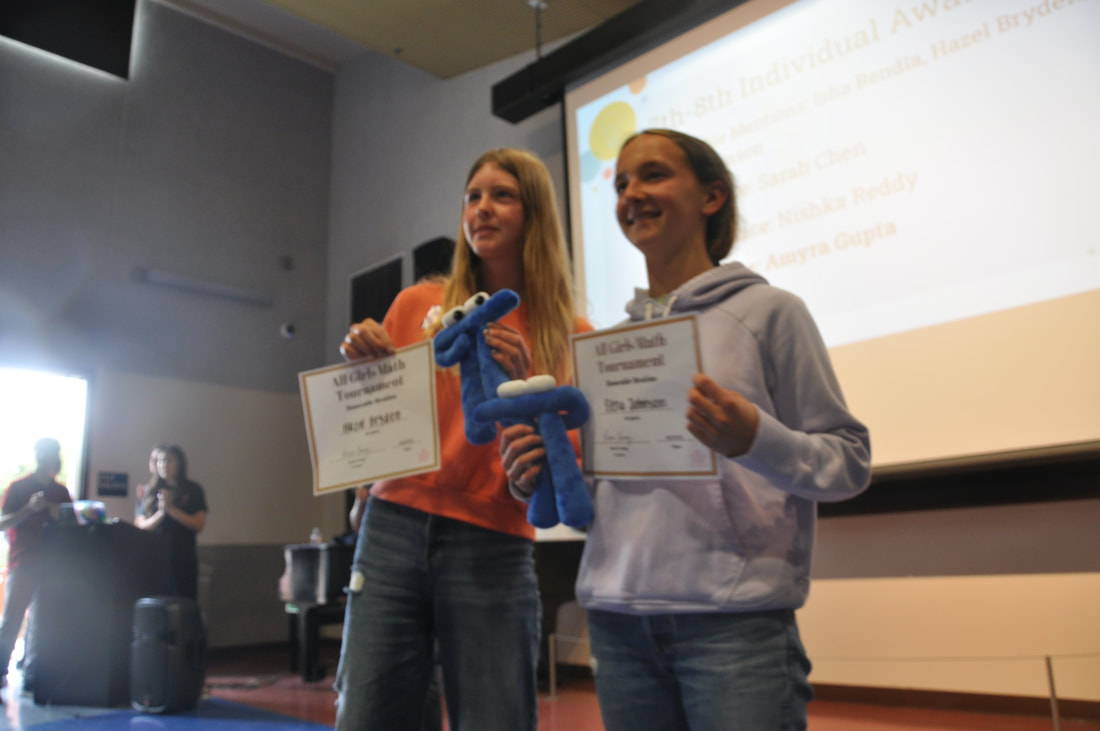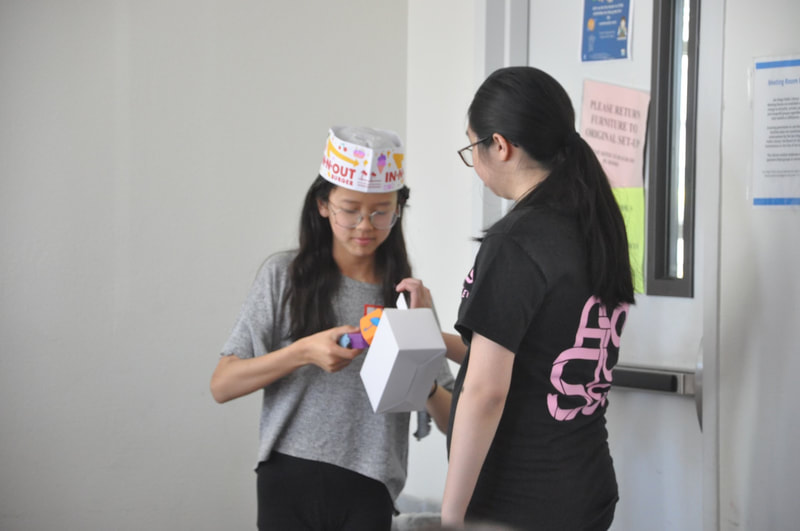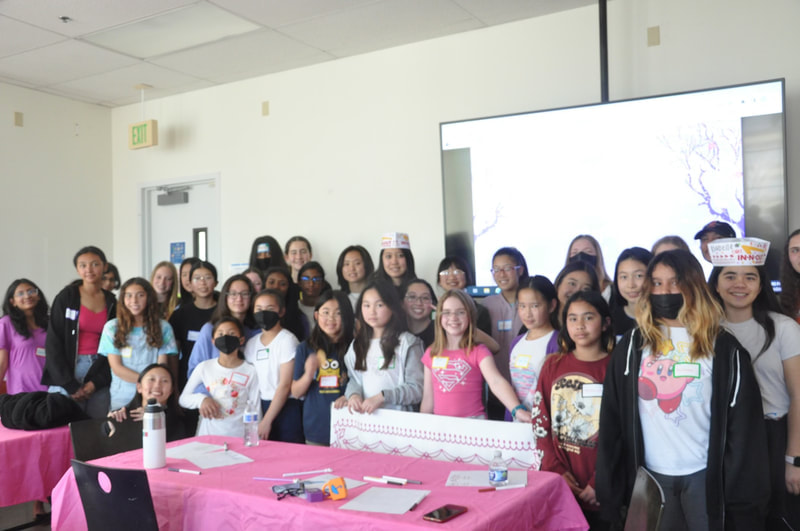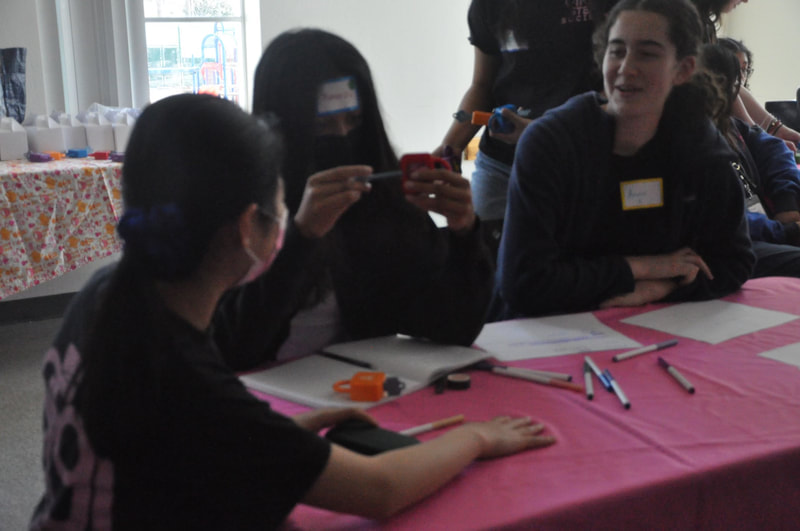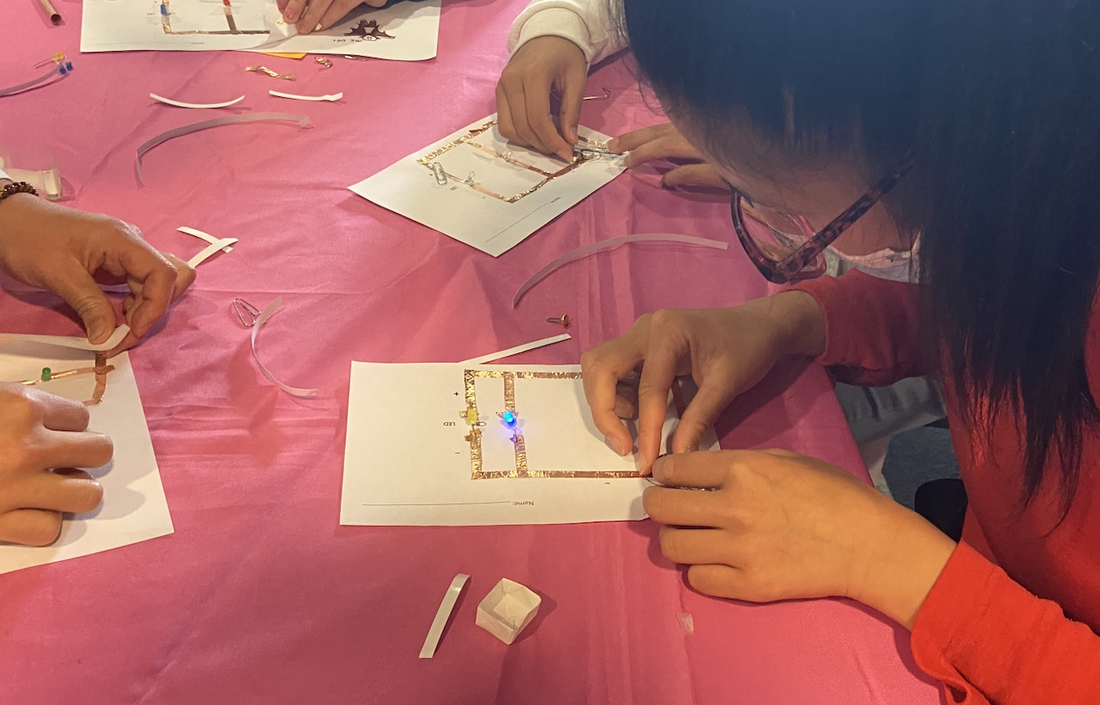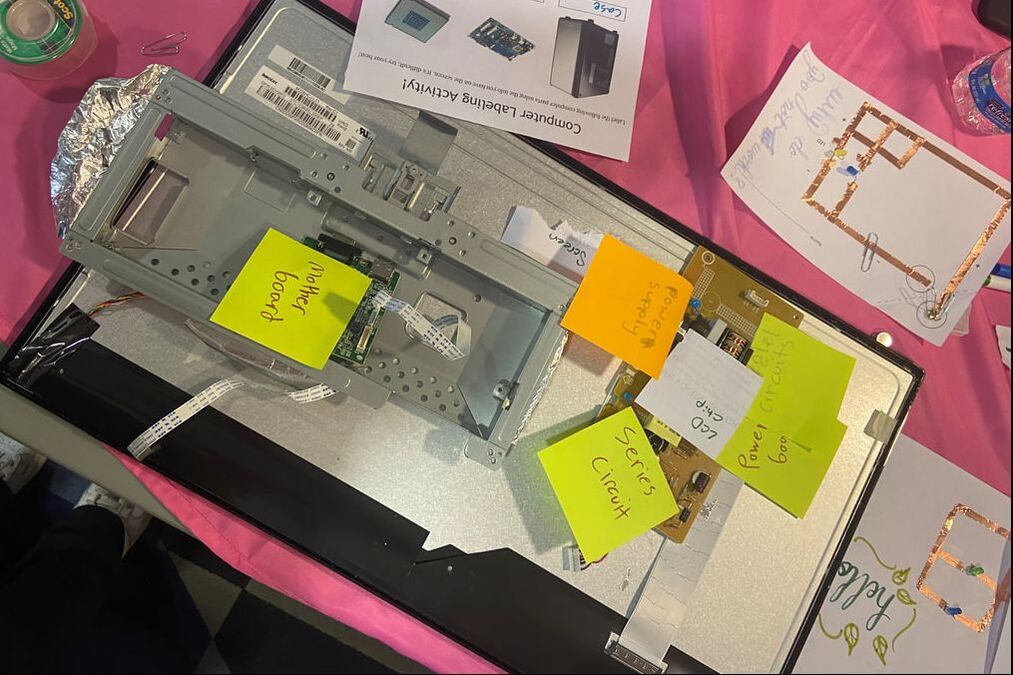|
On December 16th, we hosted our annual Holiday STEM Party at the Logan Heights Library. At various holiday-themed stations, our participants tested their engineering, logic, and craft abilities in various STEM activities.
First up, participants created Elf Potions. Using red cabbage juice, we learned about chemistry and tested the pH of vinegar, milk, water, baking soda, and dish soap. One participant “I liked seeing the different colors of the mixture when we added cabbage juice.” At our next festive station, the girls competed to engineer the tallest or sturdiest gingerbread houses, using knowledge of geometry and structural design. Each team chose to focus on stacking the highest tower of graham crackers and candy, or to use frosting to make their house last the longest in an earthquake test. One participant exclaimed: “I just love making gingerbread houses,” and her teammate added: “Or in this case, graham-cracker houses!” After the break, to learn about geometry and angles, participants folded and cut their own fractal snowflakes! Some folds made right angles, while others made acute angles. By cutting out different shapes, the girls could open up the papers and see a beautiful, geometric snowflakes! In another thrilling competition, participants constructed their own Candy Catapults to try and launch peppermints into a cup. They incorporated knowledge of simple machines and physics to engineer their catapult. One participant “liked that it was challenging.” Lastly, the girls solved some holiday mystery puzzles! From sudoku with holiday images to solving a Gift Mix-Up problem, we challenged our minds to spread some fun holiday cheer. We hope you can join us for our next workshop about Geometry on January 20th, which will take place at Logan Heights Library. Happy Holidays!!
0 Comments
On Saturday, November 18th, we hosted our Engineering Design Workshop at the Allied Gardens/Benjamin Library, where 35 kids worked together in groups to build cars. We began by listening to a short lecture on the basics of engineering design, including what it is and what steps it requires. Then, we started our main activity, which was building cars. The first step was identifying the problem: how to go from point A to point B in the fastest and most efficient way possible. Then, we reviewed knowledge on friction, air resistance, mass, weight distribution, and potential and kinetic energy that would be helpful to keep in mind when building the cars. After that, we went to the second step, which was sketching the car designs. The kids used the material list to plan their designs for ten minutes, and then they moved on to prototyping. They made a first version of their car using cardboard, tape, hot glue, straws, and many other materials, keeping in mind that they had the opportunity to improve upon it later. After a quick snack break, the kids tested their cars on ramps around the room, and used their experiences to try and improve their cars. One girl commented that “this is my favorite part because it’s super fun!” Finally, after the redesigning, all the groups competed against each other. Their cars were evaluated on three criteria — fastest, most materially efficient, and best-looking. Overall, the girls had lots of fun, with one of them saying that “I really want to come back.”
On November 13th, UVA AGSS hosted a workshop on Sound Waves! Students were first given an overview of the physics behind sound waves. They learned that all sound is actually just energy created by a chain reaction of vibrating particles. They then were taught how to identify the parts of a sound wave, such as compression and rarefaction, and how animals use sound waves in the form of echolocation to find objects.
After learning about the science behind how guitars amplify sound, we then guided them through our activity for the day: rubber band banjos! Students created their own instruments with paper plates, rubber bands, and a wooden stick, and let their imagination run wild with the decorations. We loved hearing everyone’s banjo songs and seeing their creative designs! On October 14th, AGSS hosted our Power and Electricity Workshop at Mission Hills Library, led by La Jolla High sophomores Anabel Weinstein and Siena Lin. We started off by exploring batteries, which the girls connected to the batteries inside of phones and TV remotes. What are some examples of electricity in our lives? Participants answered: “video games, lights in our house, and microwaves!” We witnessed real-life examples of electricity, such as the static electricity from rubbing a balloon on our hair, or creating a human circuit with ALL the participants and volunteers! Diving into our first activity, we explored whether certain materials were conductors of insulators — whether they allowed electricity to pass through it or not. We created our own circuits using different halloween-y materials (i.e. paper ghosts, leprechaun coins, gummy worms, witchy erasers), and we discovered that some were conductors and allowed the LED light to turn on, and others were insulators, and the LED light stayed off. We then explored different forms of renewable power, such as solar power, hydro power, and wind power. The average human, as it turns out, uses over 29,000 Watts of power a day! This is all the more reason for us to work towards conserving energy or finding more environmentally-friendly/sustainable forms of power. Our final activity was creating our own electrical circuit critters!! Using pipe cleaners, batteries, and LED lights, participants One student exclaimed: “The light is my favorite color, and I’m so glad I can make it light up!” We had many creative animals made, such as bats, butterflies, and bugs! We hope to see you at our next workshop, the Engineering Design Workshop, on November 21! On September 27, UVA AGSS hosted a workshop on Tessellations! These fascinating patterns are made of shapes that tile together perfectly without any gaps or overlap. Students saw examples of tessellations, from famous mosaics to everyday examples like puzzles and honeycombs in nature. They learned to sort these patterns into two categories: regular and non-regular tessellations, and tied these concepts to geometry and polygons.
They then learned how to use math transformations such as rotation, translation, and reflection to create their very own tessellations! With some guidance, students were given time to plan their designs and ensure they would fit together. Then they finally constructed their tessellations by cutting out the tiles from pieces of paper. We loved seeing each student’s creativity as they combined their artistry and STEM knowledge to design something truly unique! On September 2nd, AGSS hosted our first workshop of the 2023-24 year! Over 40 girls attended our DNA and Biophysics workshop led by junior Emmie Kao. We first discussed how Biophysics — a lesser known discipline in science — is the intersection of Biology and Physics. Starting with Biology, we looked at cells, the building blocks of the universe, and their components, called organelles, and the differences between animal and plant cells. We then zoomed in on the nucleus, which houses DNA. We learned about the structure of a DNA molecule and how it determines the traits in living organisms. Our first hands-on activity was constructing candy DNA, where participants created double helices with licorice and lifesavers. Of course, we happily ate our DNA creations afterwards. We also took the chance to discuss Rosalind Franklin’s contributions to the discovery of the structure of DNA, featuring her as our Woman in STEM. Next up: Physics! What is a force? It can be a push or a pull, such as gravity. Forces cause motion, but what does motion look like in a fluid? Some fluids, like water, are easier to move through than more viscous fluids, such as honey. Our bodies are made up of many fluids, and we can apply these concepts of physics to track movements in our bodies, like blood flow. This is an example of Biophysics. We can even track moving particles such as DNA! Our next activity was Strawberry DNA Extraction, during which we crushed strawberries, put them in an extraction solution, and watched the DNA bunch up and become visible to the human eye! We talked about the movement of DNA during the lab and shouted with glee when our DNA finally began to form. One participant exclaimed: “It was really cool to see the parts of a strawberry that you couldn’t see from the outside.” Another participant said: “It was cool that a couple liquids could make the DNA visible!” Lastly, we placed our clumps of strawberry DNA into different solutions to measure the velocity at which it moved through a certain liquid. A participant stated at the end of the workshop that her favorite activity was measuring the velocity of DNA because she “loves doing science experiments.” We hope to see you at our next workshop, the Electricity and Power Workshop, on October 14th at Mission Hills Library! On June 13th, AGSS hosted a workshop about Engineering and Rube Goldberg Machines! Hosted by our graduating president, Kasie Leung, we first started by learning about the basics of machines by covering some simple physics, including potential and kinetic energy, force, gravity, and more. Kids answered questions such as “What is force?”, talking about it in both the context of Newton’s Second Law and examples of force in their everyday lives. Afterwards, the kids then did an awesome mini lab to get them thinking about machines. Using pool noodles, they built their own roller coasters on their tables, incorporating different materials, slopes, and more. Using this mini lab and various physics formulas, the kids got to see the Conservation of Energy in action.
We then moved on to learn about some “Simple Machines” such as levers, pulleys, and more, and how we see these simple machines are incorporated into more complex ones. The kids looked at various examples, including cars, slides, and seesaws. Finally, today’s workshop culminated with the kids building a Rube Goldberg machine that spanned across the whole library room. A.k.a, a super complex machine to do a very simple task, that being popping a balloon today. Using what they learned in the past two hours, their task was to incorporate at least two simple machines into their design. Another challenge was that they also needed to communicate with their adjacent teams to make sure their machines could all be connected together. The kids all had so much fun, and the final product included a mixture of pulleys, ramps, and more. Barring some technical difficulties, the machine was, at the end, able to pop the balloon as intended! Thanks to everyone who came, and we hope to see you at the NASA Astrocamp on either June 30th or July 1st! <33 On May 13th from 1:00-4:45 p.m., girls from grades 3-8 participated in AGSS’s annual All Girls Math Tournament at the Logan Heights Library! In this Mathcounts-style contest, our participants solved challenging math problems individually and collaboratively in three divisions: grades 3-4, 5-6 and 7-8. The Sprint Round included 30 problems to be solved in 40 minutes, and the Target Round included4 pairs of 2 problems each to be solved in 6 minutes. Both rounds challenged our participants’ speediness and accuracy. On the other hand, the Team Round, which was composed of 10 questions where the answer from the previous problem carried over to the next, encouraged our participants to work collaboratively and efficiently to solve the most problems in the shortest amount of time. We ended our competition with an easter egg relay as the participants played the game 24, where they used 4 numbers and the 4 basic operations (addition, subtraction, division and multiplication) to create the number 24.
One participant remarked that “the Team Round and the easter egg relay were the most fun,” and another remarked that while “the sprint round was hard, it was also super interesting.” We are so happy to have hosted another year of smiling faces at AGMT! Of course, AGMT would not be possible without the support of our generous sponsors, including Texas Instruments, Wolfram Alpha, Expii, AoPS, Kendra Scott, Gorjana, JoJo’s Creamery, Seaside Equity Partners, 3Blue1Brown and Jane Street, who provided funding and wonderful prizes for our contestants. Look forward to our next events: the Rube Golberg workshop, held on June 3rd at Mission Valley Library and the NASA Astrocamp held on June 30th and July 1st. On Saturday, March 18, we hosted our Cryptography Workshop at City Heights Library. This workshop was led by Veronica Tang (one of AGSS’s co-founders!). The girls were able to discuss real-life examples of cryptography, such as secret sharing and hash functions. We then explored encryption, which is a tool that can help us to send messages without the public understanding the information sent. For example, what does “rzkkns” mean? Well, “muffin,” once it’s been put through a Caesar cipher!
Next, the girls met Isabelle and Bob, a baker and a customer who try to deliver cakes to each other without the sneaky delivery man eating the cake first. How might we use locks and keys to evade this threat of cake theft? Through a series of puzzles and scenarios, the girls navigated this challenge creatively, demonstrating different methods of encryption. Acting out different scenarios also represented how we might send digital messages to each other on a daily basis, mirroring many encryption concepts. They learned about terms like public key cryptography, certification organization, Denial of Service Attack, and authentication. This hands-on activity brought cryptography protocols to life in a fun way! One participant commented that “Isabelle and Bob made the lesson much more interesting and fun.” Look forward to our upcoming events, including Geology on April 29th at Mission Valley Library and the All Girls Math Tournament on May 13 at Logan Heights Library. AGSS X CyberAssist This Saturday, February 18, we hosted our Circuitry and Hardware Workshop at Mission Valley Library. This workshop was the first AGSS & CyberAssist collaboration, led by Ryan Qin from CyberAssist along with Kasie Leung from AGSS. CyberAssist collected over 70 computer monitors, hoping to use these materials to teach circuitry and computer hardware before they are donated. Electronics are an essential part of our lives, and the participants were able to explore the parts and inner workings of computers in a hands-on and fun way!
Our first activity involved using copper tape to create our own circuits. We experimented with creating switches and parallel circuits to try and turn on a light, applying our knowledge of atoms and electricity. Upon conducting electricity through our own bodies, one participant exclaimed: “This is actually really cool. I never thought I’d really like this!” Our next activity was turning ourselves into computers. We simulated the inner workings of a computer, taking on the roles of the CPU, motherboard, RAM, and GPU. Each group had to describe a toy through a chain of different people (acting as computer parts) and finally, draw the best depiction based on the clues given by their team. Afterwards, the participants thought it was “so exciting” to take a look inside a real computer monitor and label the parts themselves. We hope you can join us at our Cryptography workshop on March 18! |
Archives
June 2024
|
All Girls STEM Society is a 501(c)(3) nonprofit organization.
